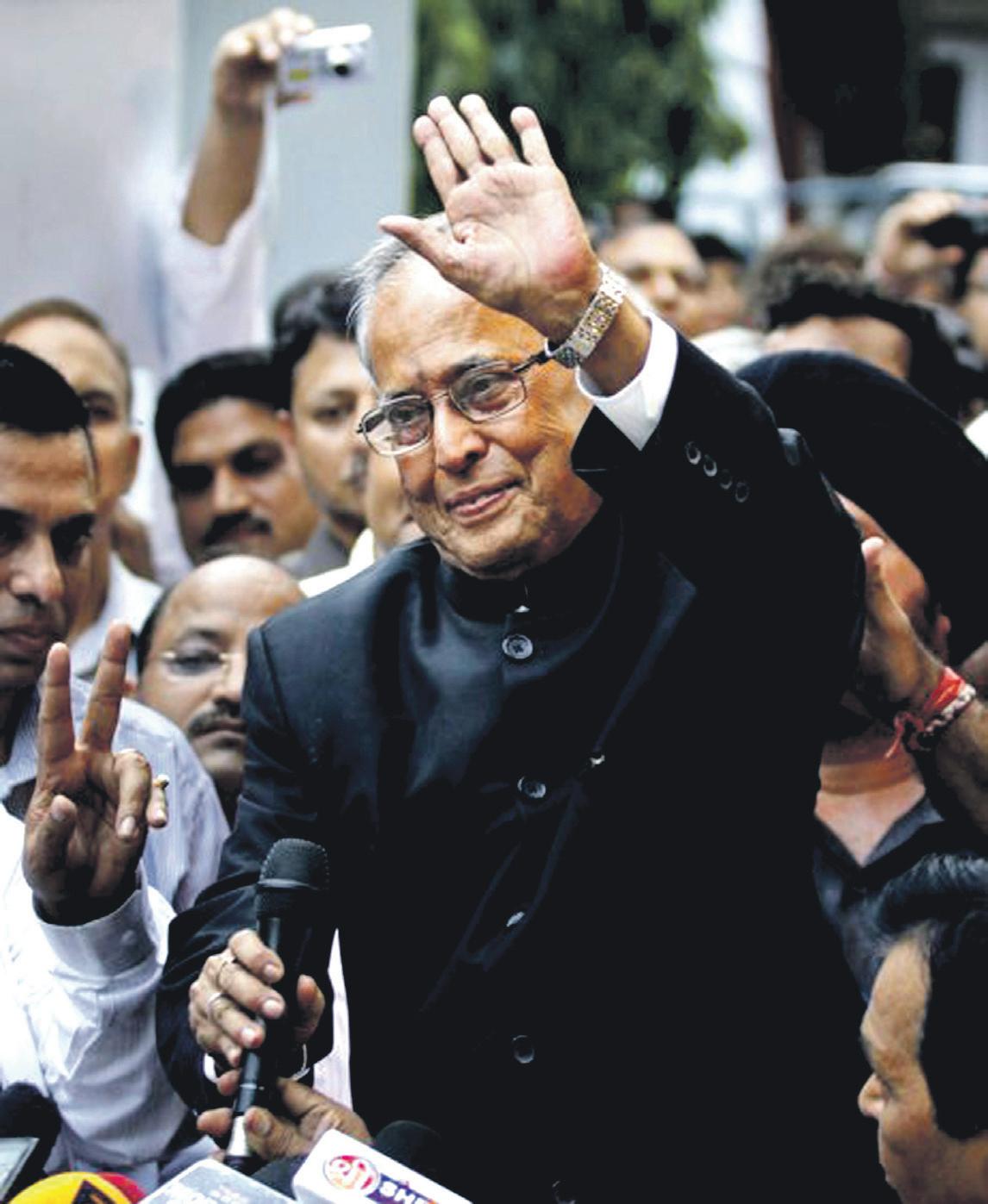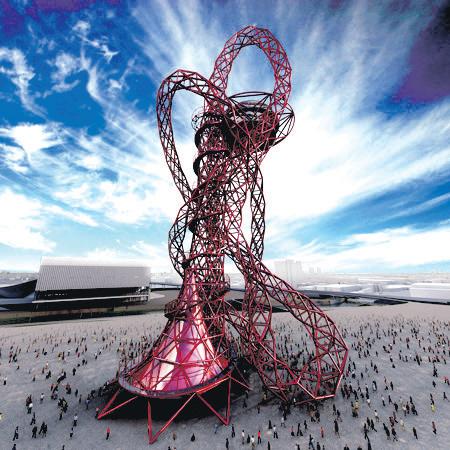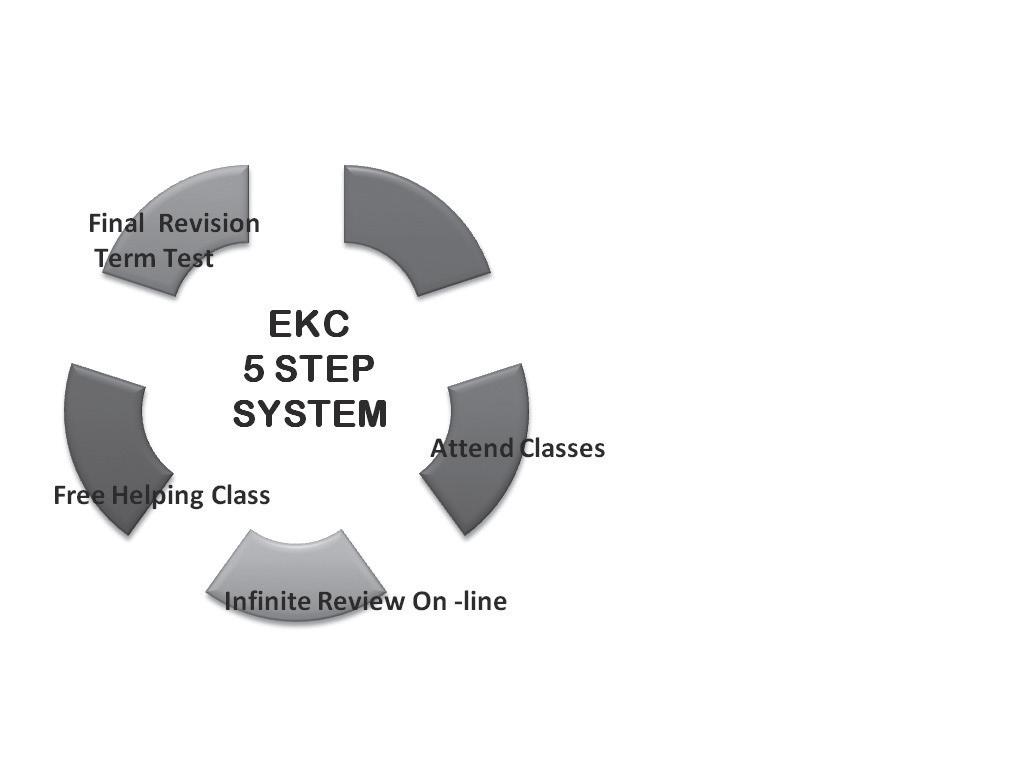
18 minute read
President Pranab
from 2012-08 Sydney (1)
by Indian Link
After four decades of dedicated service to India, one of its leading politicians takes on a new and worthy responsibility
his knowledge and sagacity.
Pranab Mukherjee’s position in the Congress-led United Progressive Alliance party was indisputable - he had headed 83 of the 183 ministerial decisionmaking groups, known as Group of Ministers. He has, over a period of 25 years, presided over cabinet meetings when the prime minister has been away. But the top post in the government has eluded him because of what some feel is the Gandhi family’s wariness. This goes back to the time after Indira Gandhi’s assassination in 1984 when Mukherjee, a stickler for rules, is supposed to have pointed out to her son Rajiv Gandhi that convention demanded that the second in command be the caretaker prime minister till the Congress elected a new leader.
variety of portfolios in successive governments. He first headed the finance ministry in 1982, and holds the distinction of having presented budgets in both, the preliberalisation and post-liberalisation era.
There was a time when Mukherjee was derisively called a “rootless wanderer” by some of his party colleagues, as he had never won a Lok Sabha election till 2004. But when he won from the Jangipur Lok Sabha constituency in West Bengal in 2004, he literally wept with joy. “For me this is a dream come true, a dream I have cherished and nourished all my life,” he had said.
From the time he first became minister of state for revenue and banking under Indira Gandhi in 1973, Mukherjee has held a variety of portfolios in successive governments
Pranab Mukherjee was sworn in as India’s 13th President in a historic ceremony on July 23, 2012.
The oath of office was administered by Chief Justice of India SH Kapadia inside the central hall of parliament in Parliament House, New Delhi, where Mukherjee, 76, the country’s first citizen, swore to rise above partisan politics in the conduct of his high office.
The ceremony saw the president’s mounted bodyguards, resplendent in their livery of white and with dark turbans to match, give the national salute and 1,000 members of the three services lined along Raisina Hill road to give the Hazar Salam or thousand salute to the president - the supreme commander of the armed forces.
Mukherjee, attired in a black sherwani and churidar looked solemn throughout the ceremony, and broke into a smile only when waving to the media from a horsedriven presidential buggy after he inspected his first guard of honour as president in an open jeep.
In his first speech as president, Mukherjee, who has a five-year term, said his high office demands that he rise “above personal or partisan interests in the service of the national good”.
He said for India to progress and for “development to be real, the poorest of our land must feel that they are part of the narrative of rising India”.
In a brief speech marked by high prose, Mukherjee said, “I have seen vast, perhaps unbelievable, changes during the journey that has brought me from the flicker of a lamp in a small Bengal village to the chandeliers of Delhi”.
In his speech, Mukherjee dwelt on hunger and poverty, saying “there is no humiliation more abusive than hunger”.
He also dwelt on terrorism, terming it the fourth world war with the Cold War being the third and stressed on education as the “alchemy that can bring India its next golden age”.
He touched on corruption, terming it as an evil “that can depress the nation’s mood and sap its progress”.
Mukherjee will move into the 340-room Rashtrapati Bhavan from his official bungalow on Talkatora Road. He will travel henceforth in a long black bombproof official Mercedes limousine - a far cry from the Ambassador car in which he used to travel.
A pro at politics
With four decades of politics to back him, Pranab Mukherjee won the July 19 presidential poll as the ruling United Progressive Alliance (UPA) candidate with a clear margin, bagging 527 to opposition-backed PA Sangma’s 206, while 15 votes were declared invalid. Mukherjee is among a handful of Indian politicians to have held three key ministries of finance, defence and external affairs through his 40 years tenure as a politician. He was a key member of the UPA and was chief troubleshooter for the coalition because of his excellent rapport with leaders of all political parties. Mukherjee headed almost all ministerial panels with his vast fund of knowledge. He commands tremendous respect across all factions of politics, and although Congress colleagues whisper that he is a Chanakya, ancient India’s fabled political conniver, Mukherjee is largely well liked for
That was interpreted as a sign of his vaulting ambition. Mukherjee has remained out of contention for the prime minister’s job ever since.
The man for the job
Pranabda, as the Bengali bhadralok is adoringly addressed, is a persuasive orator and a formidable negotiator, and is considered a walking encyclopaedia on virtually everything related to politics and governance - all due to his photographic memory of the fine print and negotiation details - which makes it difficult for any bureaucrat to hoodwink or trip him.
A trusted and able strategist, Mukherjee remains down to earth, lives modestly, and has admitted many a time that he cannot speak polished English. For one who is supremely self-confident, he can be humble.
But he has a temper - and has more than once apologised to MPs for raising his voice inside and outside parliament.
Born into a middle-class family in Birbhum district of West Bengal in December 1935, Mukherjee’s father, Kamada Kinkar Mukherjee, was a Congress politician. Politics came naturally to the young man. After degrees in history, political science and law, Mukherjee gave up his two initial loves - teaching and journalism - to take to politics.
His parliamentary career began in 1969 when his home state West Bengal was in ferment, with Naxalites (Maoists) on the rampage. He was repeatedly nominated to the Rajya Sabha until 2004 when he entered the Lok Sabha.
From the time he first became minister of state for revenue and banking under Indira Gandhi in 1973, Mukherjee has held a
“Pranab showed leadership even as a teenager, and he started honing his skills as a leader and orator since his school days,” recalls Mihir Chattopadhyay, Mukherjee’s classmate in Kirnahar Shib Chandra High School in West Bengal’s Birbhum district and his close friend till graduation. The 76-year-old, who has now retired as a teacher in his alma mater, recollected how in 1949 Mukherjee impressed and convinced a minister to renovate the school building. In a poignant moment, Chattopadhyay also recalled that Mukherjee used to play as a defender in football during his school days.
A devoted family man, Mukherjee is married to Surva, a Rabindra Sangeet singer of repute. The couple have a son and a daughter. Daughter Sharmistha is a kathak dancer. Son Abhijit, following his father’s footsteps, is a member of the West Bengal assembly. A deeply religious man and confessed workaholic, Mukherjee has not taken a holiday since the last 20 years except a trip to his village every year for Durga Puja, when he dons a priest’s robe and performs prayers for four days.
Celebrating with sandesh
Bengalis across the nation and globe absolutely exploded with joy as Pranab Mukherjee became the first Bengali to hold the highest office in the land. While Kolkata’s elite celebrated with a tea party at a posh five-star hotel, the common man simply took to processions of joy along the city’s streets as people smeared each other with gulal, danced and burst crackers. It’s not hard to figure out who had the better time.
At the state Congress headquarters Bidhan Bhavan, Bengal’s sweet delicacy sandesh was offered to all and sundry, while motichoor laddoos, malai kulhars and the evergreen sandesh were distributed at Mukherjee’s residence on Talkatora Road in central Delhi. For the savouryinclined, khasta kachoris, dahi bhallas and idli sambhar were also lavishly distributed.
As President-elect, Pranab Mukherjee thanked the people for his election to India’s highest office and said he was moved by their overwhelming support and affection as he toured the country to garner support in his run for Presidency.
“I have deep gratitude and appreciation for the people of this great country for conferring this distinction of electing me to the high office,” Mukherjee stated after being declared President-elect.
“It would now be my responsibility to defend and protect the Constitution as president...I would try to justify in modest way to be trustworthy of my people,” he added.
He also thanked all sections of society, the political parties and parliamentarians for the support during his more than four decades of public life.
“I received much more than I gave them,” he said.
From Nobel laureate Amartya Sen, to former President Abdul Kalam and various heads of state across the globe, congratulations have poured in as Mukherjee takes on this new mantle of responsibility as the leading citizen of the world’s greatest democracy. As Pranab Mukherjee stands at the threshold of a nation on the ascent, we hope he ushers in and supports a time of change and progress for the betterment of its people.
From IANS reports
Narang emerges out of Bindra’s shadow
India’s rifle shooter Gagan Narang clinched the bronze medal in the men’s 10-metre air rifle event of the 2012 London Olympics to give India its first medal.
The gold went to Romanian Alin George Moldoveanu and Italian Niccolo Campriani bagged the silver.
Narang’s illustrious compatriot and defending champion Abhinav Bindra failed to qualify for the final round at Royal Artillery Barracks in London.
Bindra’s unceremonious elimination at the qualification stage came as a heartbreak for India in the same manner as Australia’s men’s 4 x 100 relay debacle at the swimming pool. However, the 29-year-old Narang of Hyderabad, participating in his third Games, made up for his compatriot’s luckless show.
This is the third time in row that Indian shooters have won medals at the Olympics. Double trap shooter Rajyavardhan Singh Rathore won the silver in 2004, Bindra gave India a historic gold in Beijing, and now Narang has bagged a bronze in London.
“I had to complete the set in the shooting,” Narang said later. “We had a gold, silver and I got the bronze!”
Narang has always said the Olympic medal was the one that was missing from his cabinet as he has won every shooting medal worth the name.
Bindra, India’s only individual Olympic gold medallist, failed to qualify as he finished 16th out of 47 contestants.
Narang had missed the final round in Beijing Games on a countback.
This time round, not only defending champ Bindra but also former Olympic champion and Beijing Games silver medallist Zhu Qinan of China failed to qualify for the final round.
Gagan, who is also slated to take part in the 50m rifle 3-position and 50m rifle prone events, was always considered a big hope alongside Bindra after he shot four golds in the Delhi Commonwealth Games. He had given enough indications of his class in a pre-Olympics event in Germany’s Hannover by scoring 704.3 - that was higher than the world record of 703.1 set by Thomas Farnik of Austria in the 2006 World Cup.
Meanwhile, congratulations are pouring in from all over for Gagan. Union Sports Minister Ajay Maken said his bronze will inspire other Indian athletes to do well in the sporting extravaganza. He was speaking with reporters outside the Royal Artillery Barracks when Narang shot an overall score of 701.1 to finish third.
“It would have been even better if Abhinav Bindra stood on the podium as well,” lamented the minister.
The Haryana government announced a reward of Rs. One crore for Narang.
Even though Narang does not belong to Haryana, he has been given the reward under the category of sportspersons from the state as his family roots are from the northern state’s Panipat town.
Chief Minister Bhupinder Singh Hooda said Narang has brought laurels to the state and the country.
The chief minister said players from Haryana winning a gold medal in the Olympics would get Rs.2.5 crore, silver medallists Rs.1.5 crore and those winning bronze Rs.one crore.
(As the Haryana government doled out cash rewards, cars, mobiles and other goodies for medal-winning players from the state in the CWG and Asian Games (2010), Narang, who won four gold medals in shooting in Delhi, walked away with a cash bonanza of Rs.37.5 lakh. This was the highest prize money among all the 35 players honoured at that time.
Each CWG gold medal winner had received Rs.15 lakh from the Haryana government. Those winning more than one gold medal got an additional Rs.7.5 lakh for every medal. Narang and all other gold medallists also got one Maruti SX-4 car priced around Rs.800,000, and a Nokia mobile phone).
Shooting became the second sport after men’s hockey to fetch India more than two medals down the years at the Olympics, with the success in the discipline having come from three back-to-back games since Athens in 2004.
Narang’s success has added to India’s less than impressive medal count - which now stands at 21 comprising nine golds, four silvers and eight bronzes - in Olympics history.
Hockey alone has provided 11 metals (8 gold, 1 silver and two bronze medals). Apart from the three in shooting, the Indians have got two each in athletics and wrestling and one apiece from weightlifting, tennis and boxing.
Unlike others of his tribe, Narang,an Air India executive, has also given back something to the sport by starting an academy - Gun for Glory - at Shiv Chhatrapati Sports complex in Balewadi, Pune, to train the next generation of Indian shooters.
As his father said after his London triumph, Gagan is good for more.
Anish Kapoor’s Orbit becomes symbol of London 2012
Iconic sculptor Anish Kapoor, the Indiaborn winner of the Turner Prize, has given Britain its biggest public art installation in his ArcelorMittal Orbit – designed specially for the London Olympics.

The giant Orbit is a 115-metre high steel observation tower at Olympic Park in Stratford in London that is likely to help in the post-Olympic regeneration of the area. Kapoor designed the Orbit with Cecil Balmond with steel donated by India-born steel tycoon Laskhmi Mittal, who remains the richest man in Britain with an estimated fortune of 112.7 billion pounds as in April 2012, according to British estimates.
Supported by Sri Lankan-born British architect Cecil Balmond, Kapoor effortlessly put 1,400 tonnes of molten metal for the tower like kneaded dough.
ArcelorMittal Orbit is Balmond’s complex algorithm of a cellular structure combined with Kapoor’s ability to create a spectacle.
Both artists intended to create the largest piece of public art as an enduring legacy of London’s 2012 Summer Olympics.
The Orbit, which cost 22.7 million pounds, took 18 months to finish. About 60 percent of the steel used in the structure was from recycled scrap collected around the world, particularly Luxembourg in west Europe.
Kapoor, a familiar name in Britain known for his early creations such as Turning the World Upside Down (Israel Museum, Jerusalem), Cloud Gate (Chicago), Sky Mirror (London’s Kensington Gardens) and Leviathan (Grand Palais), now has achieved the status of a demi-god.
Kapoor, who sculpts futuristic forms in steel and glass, said in an interview to The Guardian that the making of the Orbit was a “series of discrete events tied together”. Kapoor said he did not want an icon, “but a moving narrative”.
“You start under this great domed canopy that sits above you, almost ominous darkness sucking you in. Then you come slowly to light,” he said.
Balmond, who also designed the quirky headquarters of China Central Television in Beijing, which is dubbed as ‘the big boxer shorts’ due to its shape, said that he was interested in designing eccentric buildings.
Towers are mostly symmetrical, but the designers described the Orbit as unsettling and refusal of a singular image. Talking about the colour, Balmod said the park was mostly green and white, hence it was important to have other colours, like red.
Orbit has been satirized as the Eiffel Tower after a nuclear attack, or a catastrophic collision between two cranes, by many who have been against the idea.
“Victor Hugo once described the Eiffel Tower as hideously ugly,” said Anish Kapoor in defense. He also noted that as time passes the unusual becomes usual and the concept of beauty changes.
Recalling the project, Lakshmi Mittal says he “never expected” it would turn out this big. He said it was not just the supply of thousands of tonnes of steel but in reality ArcelorMittal “has given much more than steel”.
There are two other Indian touches to the Games.
Shobhana Jeyasingh, a Chennai-born contemporary dancer who works out of Britain, was approached by the committee of the Cultural Olympiad some time ago to present her new choreography, Too Mortal in the Old Churches of London during the London Olympics 2012 Festival.
Too Mortal, an atmospheric new work with Indian classical elements, was conceived for churches in London, Stockholm and Venice, Jeyasingh said.
Inspired by their dramatic architecture, the choreography contrasts and complements the rhythms and spaces of these historic buildings. Jeyasingh said she has tried to explore the “notions of the church as a sanctuary”.
Meanwhile noted graphic novel writer and artist Sarnath Banerjee, the author of the best-selling The Barn Owl’s Wondrous Capers, has taken his graphic textual art to Olympic billboards in London with a message: Games Don’t Just Deal With Winning.
The Olympic public art project commissioned by Frieze East is made of several billboards, graphic essays and posters. Banerjee says the project is against the sensibility of the Olympic Games which is about winning. “It is a campaign about people who fail”.
Banerjee said he has created characters like a boxer who is thinking of trying to duck a punch, a pole vaulter who realises that he chose the wrong discipline daunted by the audacity of the jump, a judoka who takes long-distance tips about his sport and a high jumper who lives, reads and eats light.
Banerjee is one of three artists chosen by Frieze East for the Olympic Public Art Project.
Second blackout in India hits 19 states, 600 million people affected
India was hit by a massive power failure on Tuesday July 31, bigger than the blackout a day ago, that crippled train, Metro and roadtransport services and left half the country’s 1.2 billion population without electricity for many hours.
The power failure, touted to be one of the world’s worst, hit 19 states across the north, the east and northeast of the country at 1.05 p.m. and was blamed on states overdrawing power from the northern and eastern grids.
On a day that over 600 million people were grappling with the electricity crises, the government moved Sushil Kumar Shinde from the power ministry to the more sensitive home ministry.
The power failure also left around 200 miners trapped in a mine in West Bengal’s Burdwan district. The miners of Eastern Coalfields Ltd (ECL) were rescued after emergency power supply was arranged.
Over 300 trains were also left stranded mid journey for hours, affecting around 300,000 rail passengers.
The power was restored to a large extent at around 7.30 p.m. after more than six hours. The first blackout had lasted from 2.30 a.m. to late morning.
“The grid incident occurred at 1 p.m., affecting the northern, eastern and northeastern grids. The system is under restoration,” said the official website of the Eastern Grid, among the systems managed by the state-run Power System Operation Corp Ltd.
The states affected second time round were Jammu and Kashmir, Himachal Pradesh, Punjab, Haryana, Delhi, Rajasthan, Uttar Pradesh, Bihar, West Bengal, Odisha, Jharkhand, Sikkim, Assam, Meghalaya, Tripura, Nagaland, Manipur, Mizoram and Arunachal Pradesh.
These states account for half of India’s 1.2 billion population.
Shinde, who had constituted a committee to probe the failure Monday, attributed the collapse to overdrawing of power by four states - Uttar Pradesh, Punjab, Rajasthan and Haryana. However, all four states denied the charge.
The capital’s popular Delhi Metro, which caters to 1.8 million passengers on a week day, suspended service on all its six lines due to the power trip, inconveniencing thousands of passengers. Metro services were resumed fully at 5.30 p.m.
There was chaos on the streets of the national capital as Delhi Metro commuters spilled on to the streets to look for alternative transport. With traffic-lights on the blink, over 4,000 traffic policemen manned the intersections amid the intermittent rain.
Hospitals in Delhi were unaffected by the crises due to their power back-ups, as was Delhi’s international airport. Flight operations remained normal.
Speaking to reporters, chairman and managing director of state-run Power Grid Corp of India R.N. Nayak, said the failure was due to overdrawal of power by some states and that a full inquiry would reveal the nature of the problem. He added that every effort was being made restore supplies fully by 7-7.30 p.m, but normalcy would return only by midnight.
He said the excess power drawn by the states had a cascading effect on the other states.
The Power Grid Corporation of India, which controls the country’s transmission network, said that situation across the country is expected to be normal by midnight.
“We are trying to restore (power to normalcy) all over the country by midnight,” Nayak said.
At present, the Northern Grid is getting power from Gwalior and Agra substations as well as from three hydel projects - Tehri and Vishnu Prayag in Uttarakhand and Nathpa Jhakri plant in Himachal Pradesh - he said.
According to Nayak, the demand across the three regions is around 55,000 MW.
Except for few areas in Kolkata and Delhi, and Narora (Uttar Pradesh), all three regions were affected, he said.
At the time of failure, Northern Grid’s demand was about 32,400 MW, Eastern Grid (12,000 MW) and North Eastern Grid (1,100 MW), respectively.
Bihar Chief Minister Nitish Kumar said the central government should ensure that no state draws electricity beyond its sanctioned load. “For this, they will have to develop and strengthen the infrastructure”.
The US had faced a major power blackout in early July following a storm, that left large parts of the East Coast without power for a few days and affected two million people.
Bring Lokpal or go, Anna tells UPA
As his team’s indefinite protest against corruption entered its sixth day, Anna Hazare asked the UPA government to bring a stringent Lokpal bill or be swept out of power. The government, however, hit out at Team Anna, questioning its methods of struggle.
Team Anna stuck to its demand of bringing a strong anti-corruption bill on a fast track even as the septuagenarian activist entered day two of his indefinite hunger strike at Jantar Mantar.
“The way this wave of protest against corruption is building up in the country, I get a feeling that this government will have to bring a strong Lokpal Bill or else it will have to go,” Hazare said in his address to the gathering which swelled toward the evening.
The 75-year-old Hazare looked fit on the second day of his fast that he started 29 July.
According to the health bulletin issued by the India Against Corruption (IAC), the group that supports Hazare, the septuagenarian’s blood pressure was recorded normal with pulse rate stable at 89. His blood sugar level was normal at 98. People turned up in huge numbers at the agitation site, where Team Anna’s core members Arvind Kejriwal, Manish Sisodia and Gopal Rai have been fasting for over five days.
The fasting venue was abuzz with people from all walks of life even as it reverberated with loud slogans of Bharat Mata ki Jai, Vande Mataram and Inquilab Zindabad.
A frail looking Kejriwal, on his sixth day of fast, said that “even if 5 percent corruption could be reduced, the Rs. 33 per litre taxation on petrol and Rs. 16 per litre tax on diesel could have been exempted, resulting in a huge relief to the common public”.
“No political party in the country could be expected to provide clean governance and an alternative will rise from the people’s protest,” he said.
Meanwhile, on the lines of the protest outside the official residence of Prime Minister Manmohan Singh, over 50 people, said to be supporters of Hazare, protested outside the house of union Agriculture Minister Sharad Pawar.
Denying any involvement in organisation of either of the protests, Team Anna claimed that the protest was a result of people’s anger against the government, but union minister Ambika Soni hit out at the activists for using methods that in no way enhance the cause of the fight against corruption.

“Do you think it beholds us to write chor (thief) outside the PM’s residence? Satellite transmits those images not only in New Delhi or Mumbai, but across the globe,” Soni said.
“I don’t think they enhance the cause of fighting corruption,” she added.
Congress spokesperson Manish Tewari said the government has already taken steps to bring about Lokpal by getting the legislation passed in the Lok Sabha. The legislation could not be passed the Rajya Sabha as the ruling party lacks numbers in the house, he added.
Apart from the government conceding the demand for a more stringent Lokpal law that would create an all-powerful anti-corruption ombudsman in India, Team Anna also wants the government to create a special probe panel to investigate graft allegations against 15 cabinet ministers, including Prime Minister Manmohan Singh.
Referring to the demand, Tewari said different courts have delivered verdicts on some of the allegations while in some cases, the ministers have given their responses.
Agreeing that they had a right to protest, the Congress also appealed to Team Anna to maintain self-restraint and not get swayed by emotions.
IANS do parents insist on EKC’s 5 Steps learning system?


PROFICIENT ACCOUNTING & TAXATION SERVICES




Perisher is a fantastic first-time snow experience










